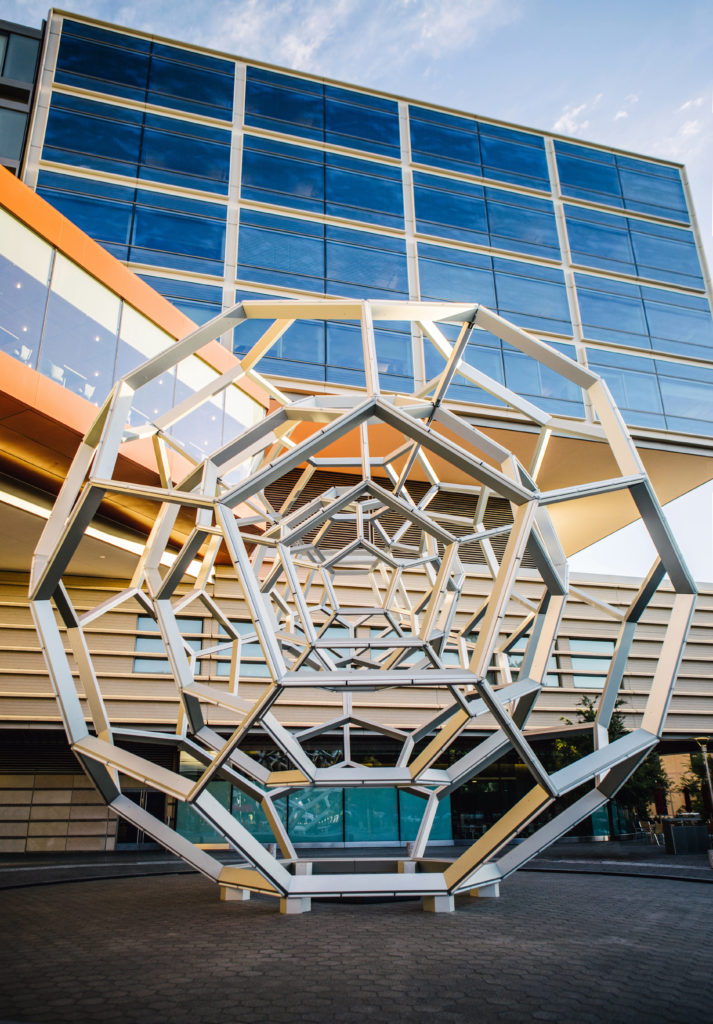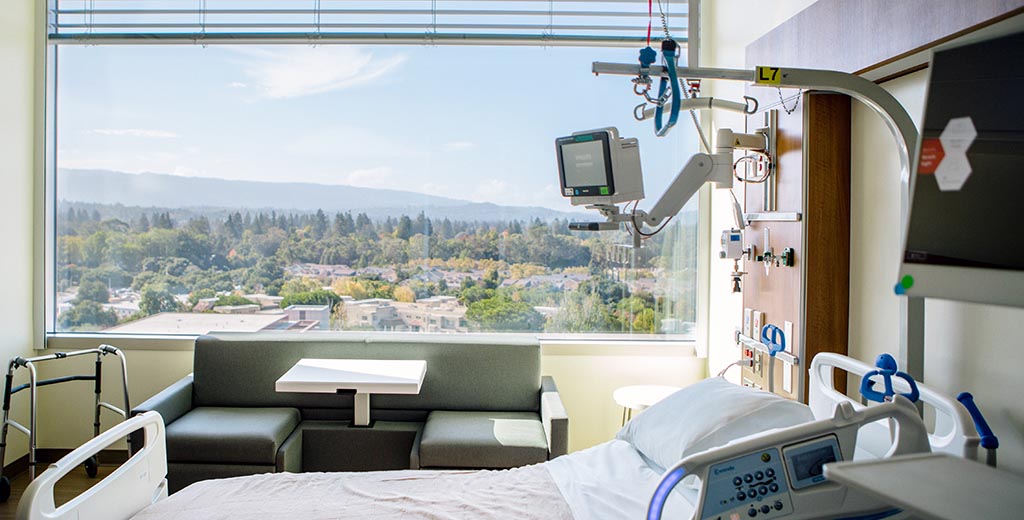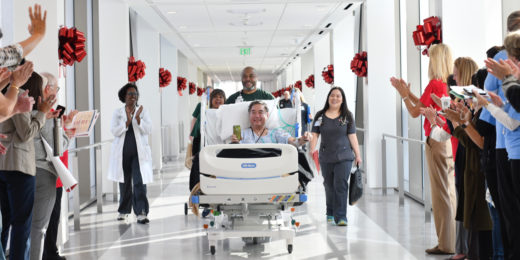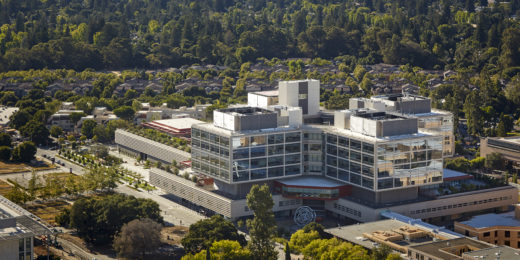Michael Moore and his wife, Lynn Fraher, first glimpsed the location of the new Stanford Hospital in 2013 after he had a heart procedure and his doctors urged him to move around. While wandering the hallways of the original hospital, they stopped at a window and looked down onto a big hole in the ground.
As his health improved, the couple continued to track the building process. And, because they are founding members of one of the hospital's Patient and Family Advisory councils, they joined the hundreds of people who provided input during the new hospital's 10-year development.
The result is a high-tech place of healing and comfort for patients and their families, and a collaborative place of innovation and well-being for employees and clinicians.
"We've created an environment to match the high caliber of the care they provide, while offering patients and families an atmosphere that has been designed to promote healing at every step," David Entwistle, president and CEO of Stanford Health Care, said in the latest issue of Stanford Medicine magazine, which includes a group of stories about the new hospital.
For a video in the issue, Moore reflected on his firsthand understanding of the life-saving nature of the environment. Before the 2013 heart procedure, Moore was treated at Stanford for various medical conditions: In 2000 he was diagnosed with hepatitis C, and in 2007 he had a liver transplant and heart valve replacement in a back-to-back surgery.

"What I've always said about the old hospital, and I know it will be the same with this new one: It's a miracle factory," Moore said. "I'm a perfect example. I probably shouldn't be here."
In a letter to readers, Dean Lloyd Minor, MD, said the hospital is "a beautiful, serene setting for healing that is also an advanced incubator where we can cultivate our vision of precision health."
The issue includes stories about the development of the hospital and the work being done there:
- George Tingwald, MD, Stanford's administrative director of medical planning, and others discussed -- in a story and video -- how the hospital's design and the latest technology combine to put patient wellness first. Also, in a series of podcasts, Paul Costello interviewed Tingwald and two others who were instrumental in the hospital's development: Gary Fritz, vice president and chief of applications; and Alpa Vyas, vice president of patient experience for Stanford Health Care.
- In a story exploring the new hospital's art and meditative garden spaces, some of the artists whose work is featured shared their inspirations.
- Stanford physicians and researchers intent on alleviating patients' concerns about surgery have developed programs to better prepare patients for the procedures and recovery. Also, new surgical ICU suites are helping enhance post-surgery care.
- As the new Marc and Laura Andreessen Emergency Department was being designed, clinicians and staff members helped ensure workspaces were arranged to facilitate collaboration and efficiency. But it's only one example of the creative ways the emergency staff is building a culture of teamwork.
- In a search for more reliable guides than inexact visual and tactile cues, brain surgeons have turned to technology, including using MRIs in the operating room. Some new surgical suites are equipped with MRIs so surgeons can have clearer views as they work, in near real time.
The issue also includes articles unrelated to the new hospital, including:
- A story about a group of physicians who created an algorithm to help predict disease progression for cancer patients
- A report on new discoveries pointing to damaged mitochondria as agents of neurodegenerative diseases.
Photos by Timothy Archibald






